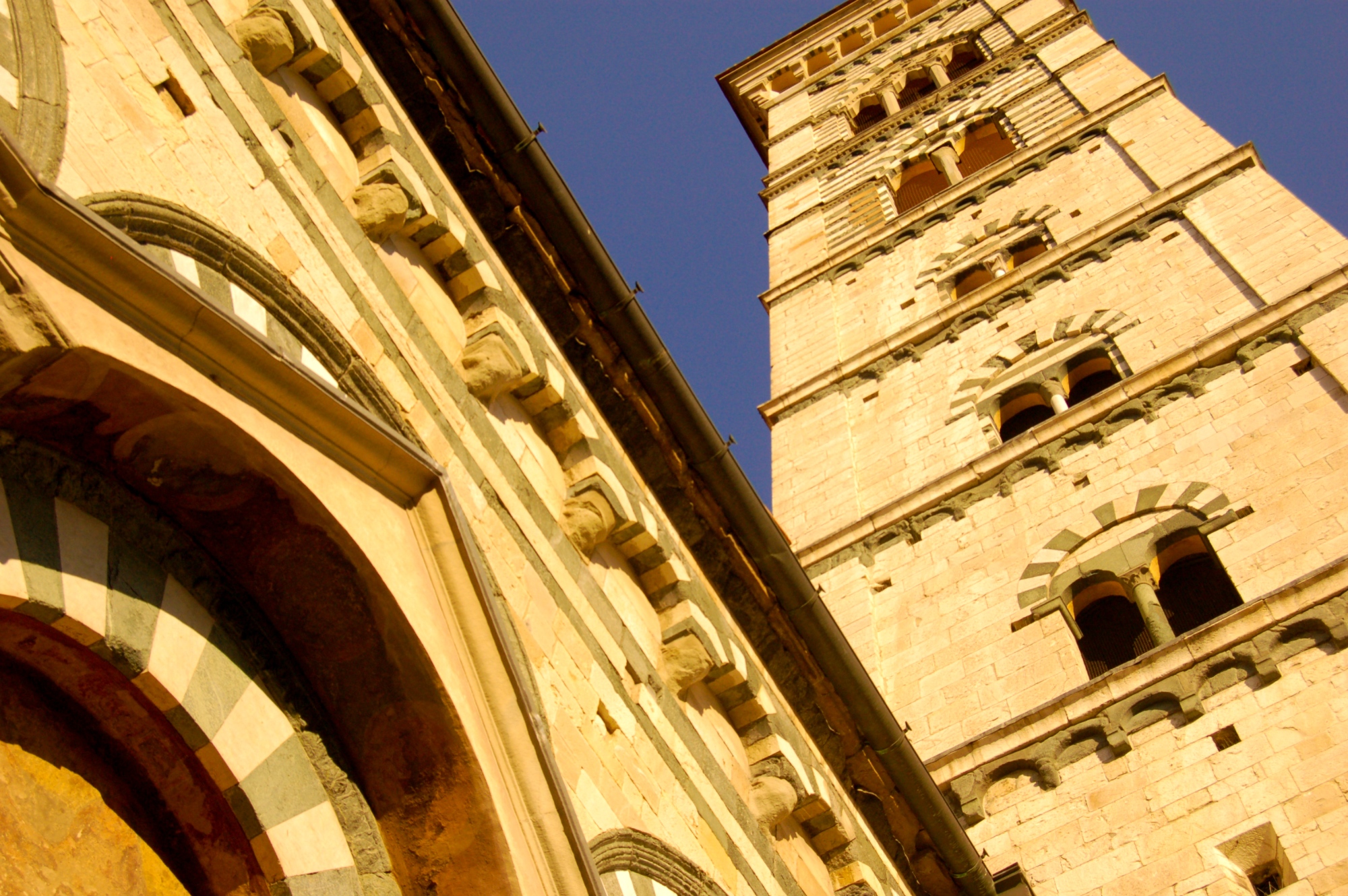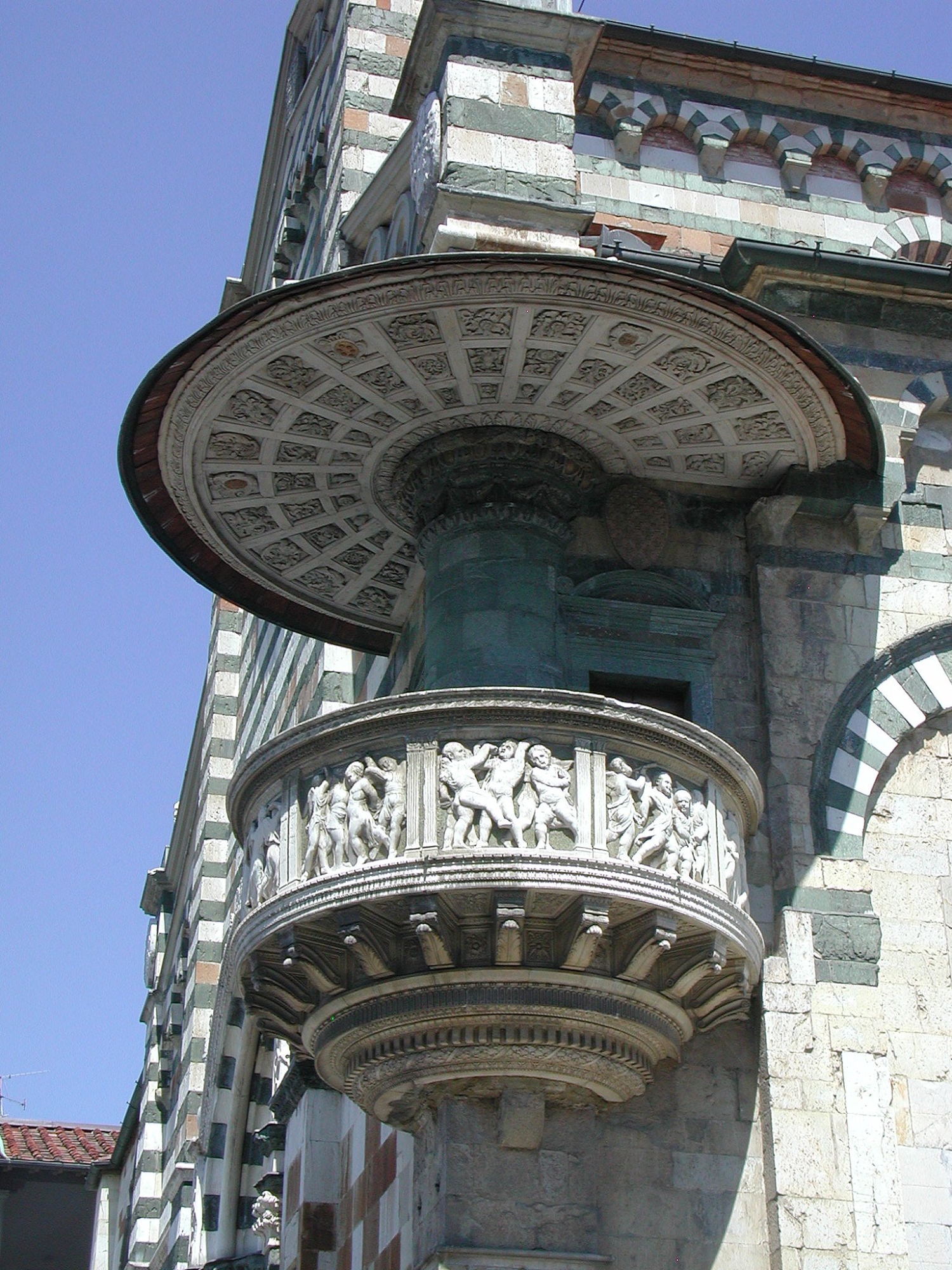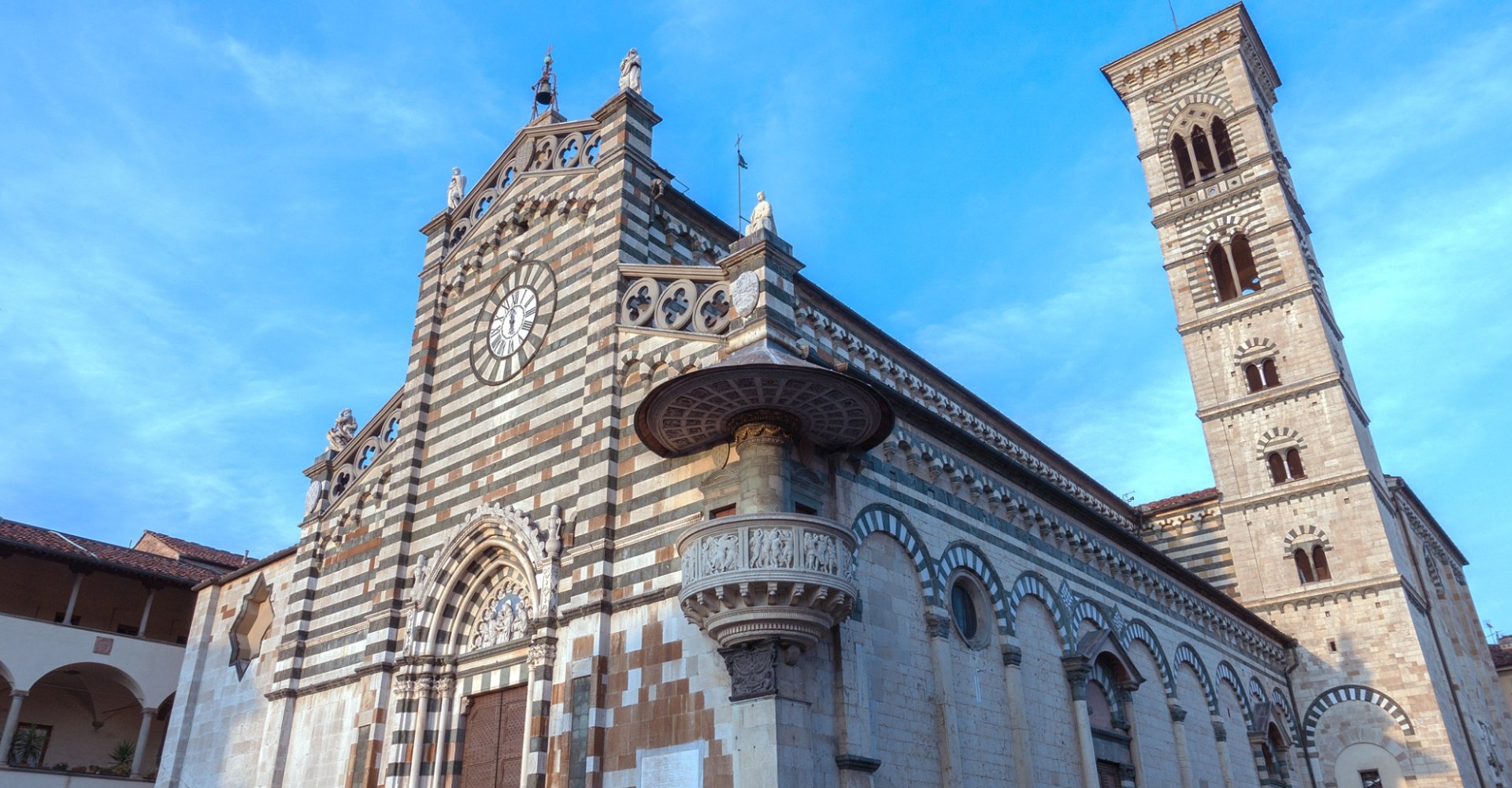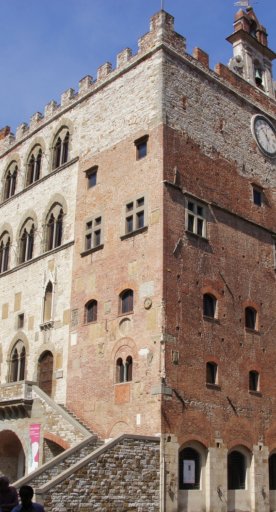Prato Cathedral
The Cathedral of Santo Stefano is the most important monument in the city
Curzio Malaparte wrote: “I look out the window and leaning a little to the side, I see before me the marble façade of the cathedral, with its rows of green and white, the Pulpit by Michelozzo and Donatello, hanging like a nest on the corner of the façade, and the beautiful bell tower that served as a model for Giotto’s bell tower.”
So the famous italian writer describes with a glance the Cathedral of Prato, successfully capturing its most interesting elements: the façade, the dual alberese-serpentine colouring, the external pulpit and bell tower, and the wide use of Prato’s green marble, the typical stone found in Monte Ferrato, used in the largest Romanesque and Gothic construction projects of the Middle Ages.


The first document that attests to the existence of the religious building in Prato dates to 994, and the cathedral later developed in parallel the city, being enlarged in the 12th century and then in the 13th century with the intervention of the master Guidetto, a marble cutter who worked on the cathedral in Lucca. The Cathedral nowadays, stands in Piazza Duomo, one of the most important square in Prato.
The bell tower, also designed by Guidetto, was built in the 1200s, while in the 1300s the Chapel of the Holy Girdle was constructed, home to the reliquary that the Madonna gave to Saint Thomas as she ascended into heaven: symbol of civic autonomy, the sacro cingolo is displayed to the city’s faithful once a year in a ritual that is regulated by civic statute. The reliquary is conserved in an altar upon which sits a marble statue by Giovanni Pisano.
Also in 1386, construction on the current façade began, which was placed over the older version with a cavity between the two so a corridor could be carved out to access the external pulpit by Donatello and Michelozzo.
Among the note-worthy works in the cathedral are the wooden Crucifix by Giovanni Pisano, a seven-armed bronze candelabra by Maso di Bartolomeo and the large transept conserving some very important fresco cycles, including the "Stories of the Virgin and Saint Stephen" by Paolo Uccello and the "Stories of Saint Stephen" and "Saint John the Baptist" by Filippo Lippi – one of the most important artworks of the Renaissance, known for its splendid "Salome's Dance", set at a lavish Renaissance banquet.










